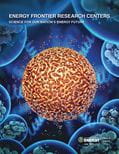Understanding Drooping Light Emitting Diodes CEEM
Scientific AchievementNew calculations demonstrate that LED "droop" is dominated by multi-particle interactions. Droop occurs when increasing energy input does not produce proportionally more light.
Significance and ImpactUnderstanding "droop" may result in cheaper, more efficient LEDs; LEDs are more energy efficient, smaller, and longer-lived than incandescent lamps or fluorescent lighting.
Research Details

|
Upper Left : Images of LEDs. Lower Left: Phonon mediated processes substantially affect the Auger coefficient in InGaN. Right: Droop in efficiency occurs at high carrier densities in InGaN alloys. Increases in the Indium content (x = fraction of Indium) make the droop worse.
Reference: E. Kioupakis, P. Rinke, K. T. Delaney, and C. G. Van de Walle, Indirect Auger recombination as a cause of efficiency droop in nitride light-emitting diodes, Applied Physics Letters, 98, 161107 (2011) [DOI: 10.1063/1.3570656 ].
Support: Work was performed at the University of California, Santa Barbara and supported by the Center for Energy Efficient Materials (CEEM),an EFRC led by John Bowers at the University of California, Santa Barbara.
More Information : This work was featured on the Office of Science's Stories of Discovery & Innovationon September 1, 2011.









